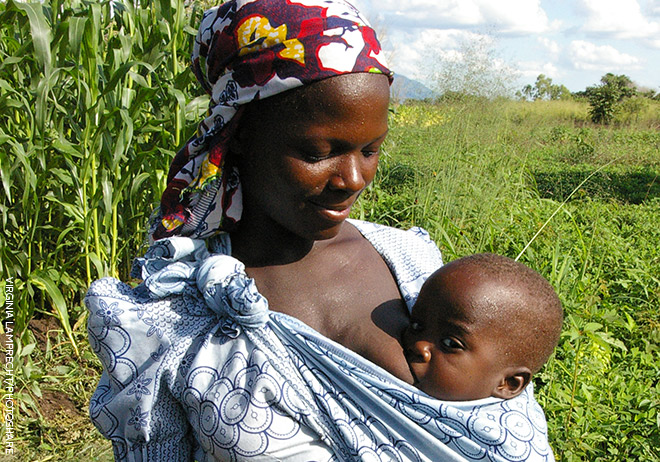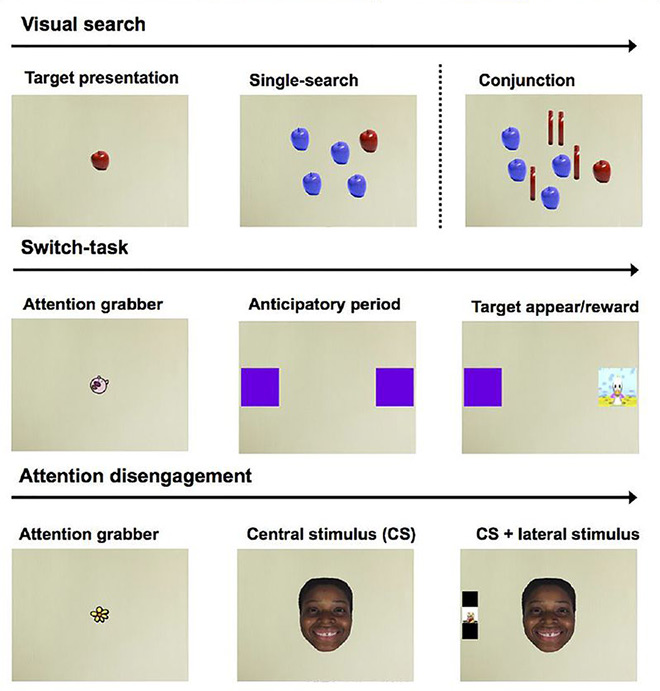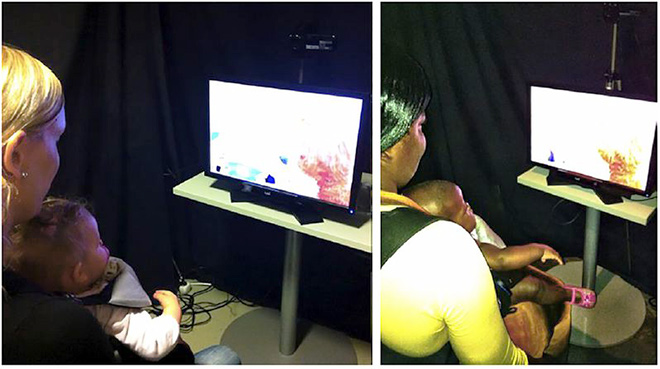
Children growing up in low-income countries face an increased risk of exposure to poverty, malnutrition, lack of stimulation, and other challenges that may affect their cognitive development early in life. However, the prevalence and specific nature of cognitive issues are still poorly understood, given the lack of techniques to assess early cognitive functioning in low-resource and low-income settings. To address this gap, the University of Tampere in Finland, in collaboration with the University of Malawi College of Medicine and with support from the USAID-funded FANTA project, conducted a field test in rural Malawi with infants to determine the feasibility and acceptability of using a non-invasive method of eye tracking to evaluate infants’ cognitive functioning.
Visual attention is an important means for infants to learn about their environment. Observing infants’ eye movements—including their detecting or shifting their gaze to visual stimuli—has long been used in the field of developmental psychology to assess early cognitive functions.
Method
The field test in Malawi involved 37 infants at 9 months of age. Each infant was placed in a baby carrier on his/her mother’s lap (or directly on the mother’s lap) in front of a 22-inch monitor connected to a device that tracked the infant’s eye movements as the child viewed pictures on the screen. Three eye-tracking tests, which took a total of 15–20 minutes, were used to assess the infants’ basic cognitive functions—including anticipatory eye movements, sequence learning, and perception of facial expressions. The data were compared to results from similar tests with 39 infants age 9 months in Finland.
Tests Used in the Eye-Tracking Assessment
The eye-tracking assessment involved the following three tests (called tasks):
- The attention disengagement task assessed the infant’s ability to shift attention from an image (either a face showing happiness or fear, or a pattern used as a control image) shown alone in the middle of the screen to another image that later appears alongside the first image.
- The switch task assessed the infant’s ability to learn to anticipate that an image that repeatedly appears on the left will again appear on the left and then anticipate the opposite after the image is switched to repeatedly appear on the right.
- The visual search task assessed the infant’s ability to search for a specific image by itself and then among other images that were either the same shape or the same color.
In addition, as a measure of the infants’ processing speed, a combined reaction time score was created based on average reaction times from the three tests.
Screen Shots From the Tests in Malawi

Findings
Overall, 95% of the Finnish infants and 92% of the Malawian infants were able to complete the entire assessment, and the quality of the eye-tracking data from both sites showed similar patterns. In addition, at least 95% of participating mothers in both sites found the eye-tracking tests to be acceptable.
The field test also found a significant difference in the Finnish and Malawian infants’ processing speed. The Finnish infants had faster reaction times than the Malawian infants, who took an average 40 milliseconds longer to respond. In addition, the Malawian infants were more likely to miss key attention shifts than the Finnish infants.
Infants from Finland and Malawi Watch Images on a Monitor

Impact
Further research is required to establish whether early-emerging cognitive markers predict long-term health outcomes in childhood. However, tracking infants’ eye movements and visual fixations has the potential to advance nutrition research in important ways, allowing critical aspects of healthy growth in children living in low-income countries to be compared to the most up-to-date body of knowledge on healthy child development. The field test showed that the eye-tracking method is feasible and acceptable to use in low-income settings similar to rural Malawi. The method has the potential to help researchers learn how nutrition interventions affect the cognitive development of infants and young children well before they become school-age, which is when cognitive development assessments are usually conducted and when it may be too late to address any problems. More study and testing are needed to make the tool easy to use in the field and scalable in low-income settings.
A paper on the feasibility of the eye-tracking method was published in the Archives of Disease in Childhood. Access the paper and reports on the method’s feasibility and validity.


